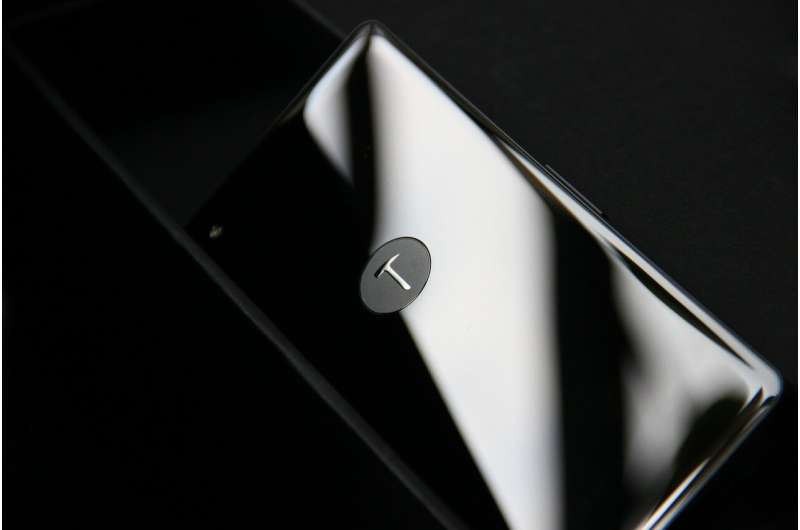T-Mobile's promise of widespread 5G comes a step closer with new lab in Washington

Two decades ago, it was an old warehouse packed with stoves, refrigerators and other appliances. Today, it's a 20,000-square-foot facility with advanced technology meant to bring nationwide 5G to T-Mobile's customers before the competition.
The company bought the building 20 years ago for general operations, slowly housing more and more of its research activity. After a fresh coat of grey paint and a fixed T-Mobile sign, the company this week introduced its first device lab in Bellevue made to thoroughly test the limits of 5G on its devices.
"We used to hide here and there were actually no signs," said Grant Castle, T-Mobile's vice president of national planning and quality assurance. "You had to know that we're here."
The device lab focuses on in-depth testing of audio quality, 5G and video optimization using sophisticated machines that mimic phone calls and tap at the phone to test applications. But the lab also tests the more primitive conditions phones may be exposed to—portions are dedicated to subjecting devices to simulations of the Seattle rain, or humidity, and robots forcefully drop phones to test their durability.
The lab is part of a larger effort by the company to keep its promise to the Federal Communications Commission (FCC) to offer widespread 5G to its customers as part of its long-sought merger deal with Sprint.
The opening of the device lab is part of the T-Mobile Launch Pad, its innovation center. A long hallway displays over 500 patents the company has obtained since 2009.
"People would always assume we were kind of a little carrier, we didn't really do much, we followed everybody," Castle said. "So we want to show off a lot of our technology leadership or network leadership because we were getting no credit for it."
But T-Mobile is making bold moves as the race to 5G continues. Earlier this year, it announced it was the first to deploy 5G on a low-band spectrum out of its Bellevue office. Low-band spectrum reaches through buildings and across larger swaths of land better than its mid- or high-band counterparts do. Its radio engineering lab, which tests low-, mid- and high-band radio antennas, has been deploying more low-band radio.
"A key part of our strategy is leveraging all of our spectrum bands for 5G network so we can bring the benefits of 5G to everybody," Castle said. "Not just small urban areas of coverage, but nationwide coverage."
T-Mobile's combination with Sprint, which has been deploying its own 5G network in mid-band frequency, is nearing its controversial finish line. In July, the Justice Department signed off on the $26.5 billion merger between the two mobile carriers, provided they sold some of their assets—which went to Dish Network in a $5 billion deal—to diminish the risk of a monopoly and preserve competition.
But a dozen state attorneys general are suing to prevent the deal, saying the merger is not in consumers' best interest. The FCC plans to vote later this week and is expected to give the final federal regulatory approval needed.
As the FCC debates the merger, T-Mobile continues to test 5G applications on its own. The device lab has over 30 Radio Performance Chambers, which test network performances on 5G-capable smartphones over a variety of bandwidths.
"You'll notice that a large majority of our testing is really around in mid-band and low-band because that is where you can get the best coverage and that's where we're actually focused on trying to get nationwide 5G," Castle said.
Together, Sprint and T-Mobile have 135.8 million customers. It's still less than Verizon or AT&T, which have more than 150 million customers each. But the merger will give T-Mobile access to Sprint's 5G technology.
"5G will unlock so may new capabilities and opportunities for innovation," said T-Mobile's chief technology officer, Neville Ray, in a statement. "And with that comes new complexities in delivering the technology to customers."
Though 5G is only available in pockets of larger cities through different carriers, T-Mobile's Tech Experience, which is another arm of the Launch Pad, is already envisioning how 5G will operate in our everyday world. The team of 17, led by Erin Raney, has developed augmented reality applications for the home, grocery store and transportation that would rely on 5G.
"Our job is just like, 'What could you do (with 5G)?'" Raney said. "And then you just start creating and thinking of things and we actually get to build them."
One of the products Raney's team developed was a virtual-reality screen that would allow consumers to look up goods while at the grocery store and comparison shop or research where the product's source materials come from.
"Because it is more of a prototype, we're able to execute quickly," Raney said.
The main mobile carriers—Verizon, T-Mobile, AT&T and Sprint—have established 5G in spots, but useful applications of virtual and augmented reality are far from ready for market.
Nevertheless, T-Mobile has acquired the rights to some other buildings surrounding the Launch Pad, and plans to expand its testing operation.
"(Bellevue) is a Central Park for us," Castle said. "And with the advent of 5G and everything coming out we expect this to become an even bigger area of development."
©2019 The Seattle Times
Distributed by Tribune Content Agency, LLC.





















